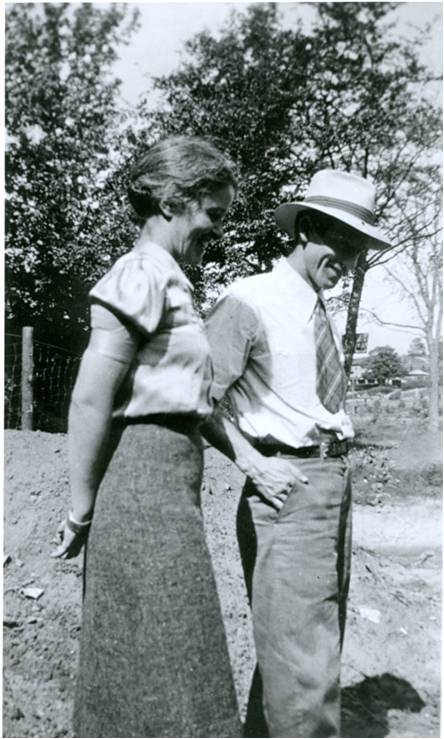Looking for Ruth Home: The Trials and Triumphs of Writing a History of Museum Education
21 December 2012 - 12:04pm
 It took me years to find a photo of her at the Royal Ontario Museum. In the end, the fabulous technician at the institutional archives, with the use of some miraculous search term that I would never have thought of, found the photograph. This is the only photo that exists of her in the ROM archive.
It took me years to find a photo of her at the Royal Ontario Museum. In the end, the fabulous technician at the institutional archives, with the use of some miraculous search term that I would never have thought of, found the photograph. This is the only photo that exists of her in the ROM archive.
Ruth Home, who worked at the ROM from 1928-1945, was an important figure in the history of the museum, and particularly in the history of museum-based education. She founded many of the educational programs for which the museum is known today: Open Evenings on Friday nights, lectures and film series, outreach initiatives, Saturday Morning Club and Summer Club were all manifestations of her educational vision for accessible mutisensory learning for children and adults from all class backgrounds. However, she is virtually absent from the archive, with the exception of her annual reports from the 1930s and from within the Directors' Minutes. Here she makes appearances as a rabble-rouser whose museum programming is continuously at odds with the directors' view of the role of the museum.
From the Directors' Minutes, we learn much about the tension that existed between early professional museum women, largely educators, and museum directors: "her deportment, methods and instruction should at all times be subject to the control and approval of the Director in whose museum she is teaching" [Jan 11, 1928] sums it up well.
But these frosty interchanges in the minutes are only part of the story. As a museum educator, and as a historian of education, I'm acutely aware of the discrepancies between the archival record and what actually takes place on the gallery floor. The difficulty about trying to write a history of museum education is that pedagogy rarely gets preserved. Museum education, like classroom-based education, is still haunted by that "black box": the day-to-day practices of teaching and learning are an emptiness that I wish I could fill [NB save lesson plans for posterity!]
Because of the difficulty of knowing this history my dissertation research has had to focus on other sources. For the last two years I have been gathering oral history interviews from museum educators at the ROM, most of whom are women, who worked as both paid and unpaid staff. It was my way of getting into the "black box" and understanding how and what educators teach in museums. Doing an oral history gave me access to their perspectives on their own pedagogical positioning in museums. This is a part of the ROM's history that I couldn't have gotten anywhere else.
I am grateful to the participants who shared with me their own personal stories: about the vagaries of funding, about spear-heading educational initiatives on a shoe-string, about teaching wthin a colonial space, about their best practices and their challenges. These voices are a necessary counterpoint to a museum history that has been defined by "founding father" narratives and Directors' Minutes.
How do you introduce different types of historical sources into your museum/classroom lessons?
Photo Source: ROM Archive

